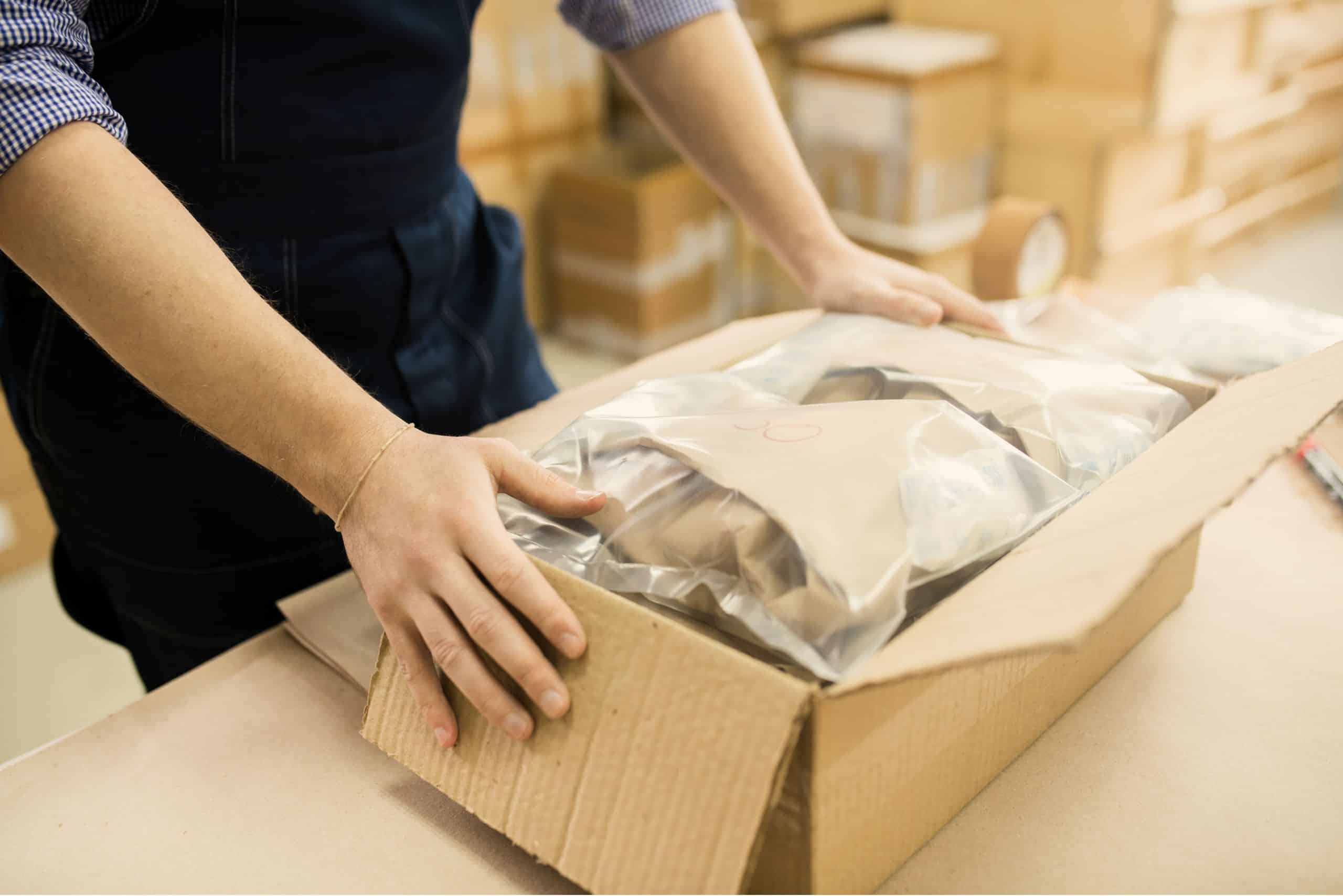Packaging optimization: How does your WMS save you money on transported "empty space"?
WMS software
Logistics
Supply Chain
October 31, 2025

Every year, you ship thousands, maybe millions of packages.
But what are you actually transporting? Products… or air?
Studies reveal a staggering figure: "empty space" represents on average 57% of the volume of parcels shipped in e-commerce.
57%…
It's not just wasted space. It's money gone up in smoke.
This also means unnecessary CO2 emissions. It puts increased pressure on your logistics and transport costs, creates a headache for your storage management, and is a source of friction for your customers who receive oversized boxes.
For years, packaging has been the poor relation of logistics optimization, considered a mere cost center.
Today, it has become a real strategic lever for your supply chain.
The question is no longer whether you should optimize your packing, but how to do it in a smart, scalable, and cost-effective way.
The answer lies at the heart of your warehouse and more specifically in the brain of your operations: your Warehouse Management System (WMS).
Forget the image of WMS software as a simple inventory management tool. The warehouse of the future uses its WMS solution not only to know where a product is, but to decide how it should be packaged, with what, and for what purpose.
In this comprehensive article, we will dissect how a WMS platform, intelligently configured, becomes the ultimate weapon against "emptiness", transforming every cubic centimeter saved into productivity gains and a competitive advantage.
The "void" transported: Anatomy of a silent cost
First and foremost, you need to assess the scale of the problem. The "empty space" in your packages is not an abstract concept; it represents a series of very real costs that accumulate at each stage of your logistics flows.
More than just wasted space: The ecological and economic impact
The first cost is, of course, material..
More empty space means more packing materials (bubble wrap, air cushions, packing peanuts) are needed to protect the product. These materials have a purchase cost, a storage cost, and a handling cost for your order preparation operators.
The second cost is environmental.
According to ADEME (the French Agency for Ecological Transition), between 20% and 25% of trucks on French roads are running empty. If we add to this the trucks that are only partially full due to inefficient packaging, the carbon footprint of logistics becomes enormous.
Optimizing packaging reduces the number of trucks on the road . Ultimately, it's a direct act of energy conservation.
Volumetric weight: When your carrier charges you for air
This is where the problem lies most acutely.
Carriers no longer charge solely based on actual weight. They now charge based on volumetric weight (or dimensional weight).
The rule is simple: they charge the higher of the two.
If your 2 kg package (actual weight) takes up the space of a 10 kg package (volumetric weight) in the truck, you pay for 10 kg.
Every cubic centimeter of "empty space" that you ship is billed by your TMS (Transport Management System) software as if it were filled.
You're not paying to transport your product. You're paying to transport air.
Reducing the volume of your packaging therefore has a direct and immediate on your shipping costs. This is the most tangible link between packaging optimization and the profitability of your logistics management.
Customer experience and the risks of breakage
A product that "floats" in an oversized box is a product at risk.
Even with shoring, the risk of shocks, vibrations and breakage increases considerably.
This generates logistics costs for returns , replacements, and, even worse, damage to your brand image. A customer who receives a small product in a huge box doesn't think, "They protected my item well"; they think, "What a waste .
"Right-sizing," or custom packaging, is therefore not just a matter of cost. It's a matter of protection and perception.
"Right-Sizing": The strategic mission of your WMS software
The solution to this "empty" problem has a name: "Right-Sizing".
The aim is to ensure that each order is shipped in the smallest possible box, while still guaranteeing its protection.
And that's where your Warehouse Management System comes in, long before the operator sees the product.
Pre-calculating packaging: An essential feature of a WMS
How can the WMS know which carton to use?
Thanks to the data.
A WMS software like our EGO WMS solution does more than just manage locations. It must also contain a master data database of items including:
- Dimensions (length, width, height) of each item.
- Weight of each item.
- Specific characteristics (fragility, stackability, not bendable, etc.).
The WMS also needs to know your entire portfolio of packaging:
- Internal dimensions of each type of carton available in stock.
- Empty weight of the carton.
- Resistance and type of fluting.
When a customer order is received, the warehouse management software does more than simply create a picking job . It executes a "packing calculation" algorithm.
In short, it virtually simulates the best way to arrange the items in the order and selects, from the available cartons, the one that will offer the optimal fill rate .
Guiding the operator (or the robot): From virtual to real
Once the calculation is completed, the WMS solution takes action.
In a typical order preparation process, the WMS will:
- Indicate to the operator (via their terminal) the type and size of the carton to be picked before even starting the picking process.
- Display a clear instruction on the packing station screen: for example "Use Carton Ref. C12".
This simple instruction, based on an algorithmic calculation, eliminates human guesswork. The operator no longer has to "guess" which box will be the most suitable . The WMS dictates it.
The era of on-demand packaging
"Right-sizing" reaches its peak with the automation of warehouses .
In the context of an automated warehouse, the WMS no longer simply selects a carton. It orders its production.
WMS solutions equipped with the right modules can interface directly with packaging machines on demand. The WMS calculates the exact required for the order and sends these instructions to the machine, which will then cut and form a carton to the correct dimensions.
The benefits are undeniable:
- Drastic reduction of the "void" (close to zero).
- Near-total elimination of packing materials.
- Better protection for the product, which is perfectly maintained.
- Streamlining the management of consumable storage (you no longer store 50 sizes of cardboard boxes, but sheets of flat cardboard).
This approach radically transforms the packaging station, which goes from a manual station to an automated production center, driven by WMS functionalities.
Checklist: Enable "Right-Sizing" in your WMS
Do you own a packaging machine and believe your WMS software has the appropriate module? Here are the prerequisites:
- Audit your product data : Are your "master data" (weight, dimensions, etc.) 100% reliable? Without this, any calculation will be incorrect.
- Reference your packaging internal dimensions of all your cartons and envelopes.
- Check WMS functionalities : Does your WMS solution have a "packing calculation" or "pre-packing" module?
- Configure business rules : Define clear rules (e.g., do not put a heavy product on a fragile one, group orders from the same customer, etc.).
Train the operators : Ensure that the packing teams understand why they must follow the WMS instructions and no longer choose cartons "by instinct".
The WMS + TMS strategic alliance: When packaging optimizes transport
The packaging optimization performed by the WMS software in the warehouse is only the first half of the equation.
The second takes place on the road, and it is controlled by another key system: the Transport Management System (TMS).
The direct impact on MSD costs: Pay for weight, not dead volume
Let's remember the volumetric weight.
When an order is packed, the Warehouse Management System now knows its actual (L x W x H) and its final weight (products + packaging + cushioning).
The next step is integration: the WMS must transmit this information, in real time, to the TMS software.
For what ?
Because the TMS will use this data to:
- Choosing the right carrier : It compares pricing grids not on an estimate, but on the actual .
- Edit the shipping label : The label reflects the optimized dimensions, ensuring you pay the right price.
- Prepare the loading manifest : The transport management software knows exactly what total volume will be loaded into the truck.
Without this communication, all the benefits of "Right-Sizing" are lost.
The risk? You have a small package, but you still pay the price of a large one because your shipping system doesn't have up-to-date information.
Optimize palletization and loading at the delivery dock
Yes, optimization doesn't stop at the parcel. It extends to the pallet.
A WMS software does not just calculate the carton. It also calculates the palletization plan.
By knowing the exact size of each package in a picking wave, the WMS can dictate to the operator (or to AGV/AMR robots ) the order and manner of stacking the packages on the pallet to maximize height and stability, while respecting constraints (weight, fragility).
The result? Fewer pallets for the same number of orders.
Once filmed, this pallet arrives at the delivery dock. The TMS then takes over, optimizing the truck loading plan using the actual pallet volume data provided by the WMS.
The benefit is twofold: you optimize space within the package, then you optimize space on the pallet, and finally you optimize space in the truck . This is logistics flow management at its finest.
The WMS specifications: Consider integration before purchasing
If you are in the process of selecting a new WMS solution, the concept of "Right-Sizing" must be integrated into your specifications .
Don't just ask yourself if you need a WMS (you already know the answer), but rather ask yourself the following questions:
- How does your WMS solution interface with your current/future TMS software?
- How does the WMS transmit packaging data (weight/dimensions/volume) to the TMS after packaging?
- Can the WMS handle palletization calculations based on optimized packages?
This connectivity is what differentiates simple inventory management from a true logistics solution geared towards overall performance.
Beyond the cardboard: Advanced processes and quality assurance driven by the WMS
Packaging optimization is not limited to carton size. The WMS becomes the guarantor of quality and the driver of value-added services, all of which take place at the packaging station.
Poka-Yoke: Quality control using the WMS at the packing station
Poka-Yoke is a lean management concept aimed at preventing errors before they occur . How does the WMS apply it to packing?
Thanks to weight control.
- The WMS calculated the total theoretical weight of the order (weight of items + weight of carton + estimated weight of cushioning).
- The packing station is equipped with a scale connected to the WMS.
- Once the package is sealed and before the label is printed, it is weighed.
- The WMS compares the actual weight to the theoretical weight.
If the discrepancy is too large (positive or negative), the WMS blocks the process. The shipping label is not printed.
- Weight too low? An item is probably missing.
- Weight too high? The operator added an extra item or used the wrong packaging.
It is a simple, automated and very effective quality assurance system to guarantee the accuracy of orders before they leave the delivery dock.
Co-packing and Kitting: The added value managed by your WMS platform
Your warehouse is no longer just a storage space. It's a transformation center.
Co-packing (packaging several products together) and kitting (preparing kits) are complex packaging operations.
A WMS platform manages these processes by:
- Creating specific Manufacturing Orders (MOs) for kitting or co-packing.
- Guiding the operators to collect the different components.
- Referring to the specific packaging (blister pack, custom box, etc.) required for this assembly.
- Managing the transformation of stocks (components "leave" the stock, the new "kit" "enters" it).
Here, the packaging is the product. The WMS is the conductor, ensuring that this value-added assembly is carried out correctly and traceably.
Cross-docking and packaging: Saving time on logistics flows
In a cross-docking , time is the enemy. Goods arrive at the receiving dock and must leave almost immediately, without going through storage management.
If the WMS knows, through information from the supplier (via an ASN – Advanced Shipping Notice), that the received packages are already in suitable packaging for the end customer, it can order a direct transfer to the shipping dock.
If the packaging needs to be modified (e.g., unbundling or rebundling), the WMS directs the flow to a dedicated cross-docking packing area for re-palletizing or express repackaging , before sending it for shipment.
The circular economy: Managing the complexity of reusable packaging with WMS
Optimization no longer stops at reducing "empty space". The warehouse of the future is a warehouse with a circular economy approach and sustainable logistics .
Regulatory pressure and consumer demand are driving the adoption of reusable packaging (trays, crates, specific containers) that can be cleaned, reconditioned and put back into circulation.
This creates a major logistical challenge: reverse logistics.
A new challenge for storage and inventory management
Reusable packaging is not a consumable. It is an asset.
It has value. It must be tracked and therefore managed like a stock in its own right.
To manage these cases , you therefore need WMS software capable of managing an "outgoing" inventory (the products) and a "returning" inventory (the containers).
For example; when a reusable bin leaves the warehouse, the WMS must know not only that it contains Product X for Customer Y, but also that Container Z is now "at" Customer Y's place.
Real-time traceability as the key to returns logistics
Thanks to unique identifiers (barcodes, RFID chips), the WMS tracks the complete lifecycle of the packaging:
- Shipping : For example, container Z-001 is scanned at the start. Its status changes to "Shipped – Customer Y".
- Return receipt : The customer (or a carrier) returns the empty container. It is scanned at the goods receiving dock.
- Control/Cleaning : The WMS directs the container to a control area (is it damaged?) or a cleaning area.
- Restocking : Once validated, the WMS assigns it a storage location, making it available for future order preparation.
Without this traceability, your stock of reusable packaging risks disappearing, and the replacement cost will negate all the environmental and economic benefits. Therefore, your WMS solution guarantees your circular loop.
How much does WMS software cost? Investment vs. ROI on "empty space"
Implementing such a solution has a cost, and it is quite natural to wonder about the price of a WMS .
But the real question is: how much does it cost you not to do it?
Analyze WMS pricing: License, integration and SaaS
The price of software varies enormously depending on the model chosen .
- "On-Premise" model : Involves a high initial license cost, implementation and customization fees, and hardware infrastructure costs.
- SaaS (Software as a Service) model : This is the current trend. SaaS WMS software (or SaaS WMS solution) operates on a monthly or annual subscription basis.
This SaaS logistics solution makes technology accessible.
The initial cost is significantly lower, updates are included, and scalability is immense. You can more easily adapt your WMS solution to your seasonal activity peaks without reinvesting in hardware.
Calculate the Return on Investment (ROI) of the optimization
Investing in a WMS solution that optimizes packaging is one of the easiest to calculate.
Refer to the figure of 57% "empty space" in your package.
Imagine that your WMS allows you to reduce this "gap" by half (from 57% to ~28%).
The impact will be immediate:
- Transport savings : Reduced billing based on volumetric weight.
- Savings on consumables : X% reduction in cushioning purchases and Y% reduction in carton purchases (thanks to better standardization or packaging on demand).
- Productivity gains : Time saved by operators who no longer have to choose the packaging.
Packaging, the unsung hero of your warehouse of the future
Packaging should no longer be the last, rushed step in order preparation.
This has become the first step in optimizing your supply chain.
This is a strategic variable that impacts your costs, productivity, carbon footprint and brand image.
But this strategic asset cannot be managed "by instinct". It requires intelligence, data and orchestration.
The Warehouse Management System is the conductor. It connects product data ("master data") to action (choosing the right packaging), connects the warehouse to the road (TMS), and prepares your logistics for the challenges of tomorrow, whether it's managing intense peak activity or steering a complex circular economy.
Stop transporting air. Start piloting your packaging.
FAQ: Everything you need to know about packaging optimization
What exactly is the role of a WMS in packaging optimization?
The WMS software acts as the "brain." Based on the dimensions and weight of each item in an order (master data), it calculates before picking (packing calculation). It then instructs the operator or packaging machine accordingly, eliminating "empty space" and reducing consumable and transportation costs.
What is the difference between a WMS and a TMS for packaging?
They are complementary.
- The WMS (Warehouse Management System) physically optimizes packaging in the warehouse (choosing the right carton, managing palletization ).
- The TMS (Transport Management System) optimizes the cost out actual size and weight data (provided by the WMS) to choose the cheapest carrier and print the correct label, based on the volumetric weight.
Can "Right-Sizing" really reduce damage?
Yes. A product packaged in a right-sized box has much less room to move around. This drastically reduces the need for cushioning and prevents the product from hitting the sides of the box during transport. Less movement means less vibration, fewer shocks, and therefore a significantly lower breakage rate.
How much can you actually save through "Right-Sizing"?
It depends on the sector, the density of your products, but some e-commerce businesses report shipping cost reductions of 10 to 20% on average.
Is this relevant for small volumes / SMEs?
Absolutely. Even for modest volumes, packaging waste is significant. A simple sizing module in the WMS or an extension can already deliver a quick ROI.
Most read articles
WMS software
Logistics
4.0 solutions
Supply Chain
September 12, 2025
Logistics picking: automation for “zero error” logistics
Is your warehouse a profit center or a source of hidden costs? The answer often lies in a single activity: picking. In fact, this step accounts for up to 60% of a warehouse's operating costs.
WMS software
Logistics
Supply Chain
October 31, 2025
Packaging optimization: How does your WMS save you money on transported "empty space"?
Empty space represents, on average, 57% of the volume of packages shipped in e-commerce. It's not just wasted space; it's money gone up in smoke. In this article, we'll analyze how a WMS platform can become the ultimate weapon against empty space.
Logistics
4.0 solutions
Supply Chain
September 19, 2025
AMR vs. AGV: Which mobile robot will boost your warehouse?
The pressure on warehouses has never been greater. In the race for performance, automation is no longer an option, but a necessity. And at the heart of this revolution are mobile robots. But how do you make the right choice?

















